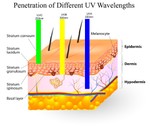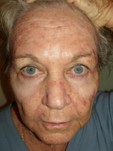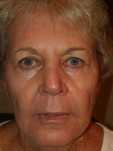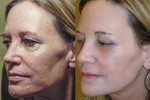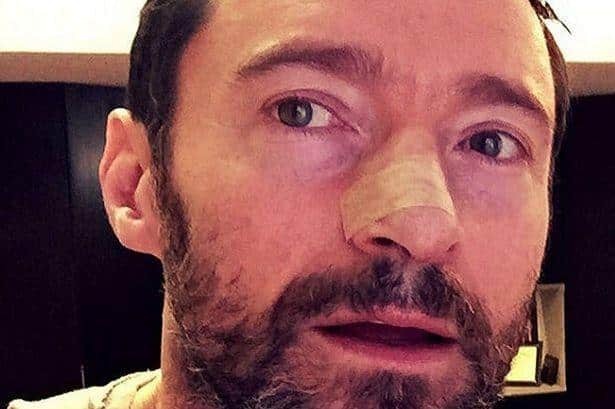
Updated February 2017:
Today Hugh Jackman sent out a startling tweet to his almost-7.5 million Twitter followers – his doctors found yet another basal cell carcinoma lesion on his nose. According to Jackman, his physicians have addressed the issue and remain vigilant, constantly on the lookout for more cancer cells on the actor’s skin, but he wants his fans to use him as a cautionary tale and use sunscreen every day.
Dr. Scheiner offers a number of remarkable treatments that can discover and address skin cancer lesions before they ever appear. Contact the office today to learn more.
Most of us have heard about the trials and tribulations of the famous actor Hugh Jackman. He has been dealing with skin cancers that keep developing on his face.
Mr. Jackman has something in common with many of us; during the early years of his life he didn’t protect his skin from the sun. He underestimated the effect that casual sun exposure would have on him.
When the sun shines down on the earth, there are a number of light rays that affect us.
First are the visible light rays that allow us to see one another.
Then there is a class of light rays that is invisible and can damage our skin. These are known as Ultraviolet light rays. There are 3 main types of Ultraviolet (UV) rays. The first is UVA, which is a long wavelength light ray. It can penetrate deeply into the skin where it fractures collagen and elastic fibers. This causes our skin to sag and droop. UVA is present from sun-up to sundown, and can even impact us through clouds and car windows. We often refer to UVA as the UV ray that causes skin Aging.
The second UV ray that affects us is the UVB ray. UVB also penetrates the skin, but not as deeply as UVA rays do. These rays cause our skin to turn red after exposure to the sun, and are often referred to as UVB for Burning. They are most prevalent from 10am – 4pm.
The third type of ray is the UVC ray. These are lethal, and thankfully they are largely absorbed by the ozone layer.
Our skin is composed of a number of different layers. The top layer is the Epidermis. This layer contains a bottom row of cells called the basal layer. It is responsible for all the cells around it. If this basal cell layer is healthy then all the layers above it are healthy, but if it is unhealthy then all the layers above it will be unhealthy. Below the Epidermis is the Dermis. This layer contains many components, including collagen, elastic fibers, hair follicles and pigment cells. Interestingly, the hair follicles that pass through this layer are critical in techniques which allow the skin to repair itself from past sun damage.One effect of the UVA and UVB rays is that they bind together portions of the DNA in the cell. The DNA is the set of instructions for the cell on how to function. The UV rays cause a binding of Thymidine in the DNA leading to Thymine Dimers. This makes this basal layer cell irregular and can lead to skin cancers.
One interesting fact is that the UV rays tend to affect the basal cell layer of the epidermis, and it is this layer that leads to many skin cancers.
People want to know whether it is possible to repair past damage to this cell layer and restore the skin back to a younger, healthier and more attractive state.
Damage to the skin is cumulative – it happens over time. In terms of skin repair, certain medications containing Retin-A are able to help mild sun damage by unbinding the Thymine Dimers, but for more extensive damage a more extensive intervention is required.
I have had great experiences using lasers to help improve the appearance of skin aging, but years ago I learned that my technique did more than just improve the appearance of skin. It also had the effect of RESETTING a person’s skin back to a healthier state.
I learned this from the experience of a patient of mine. My patients frequently become my greatest teachers, and this was a case in point. I had performed surgery on this patient two years earlier. I had lifted her drooping upper lids and improved the appearance of her lower eyelids by removing the puffy fat protruding through her lower lid skin. I then used a laser to ablate and tighten the skin in the lower lid region.
The patient healed well from this procedure. She then returned two years later after an effudex treatment which causes pre skin cancers called Actinic Keratosis to reveal themselves. What was surprising was that she had sun damage all over her face except for the 2 areas where the laser had been used.
Can you find them in the photo below? Can you see the areas under her eyes that are clear from lesions? These are the only areas on her face without lesions.
Looking at her, I realized that I had not only made her lower lid skin appear better; I had also made it, in fact, healthier.
I went on to treat the rest of her face to remove all of those small, early skin cancers.
This patient’s experience showed me that my procedure has the ability to improve both the appearance and the health of the treated skin.
It does this because most of the cancerous damage from the sun that occurs over the course of our lifetime exists in the bottom layer of the epidermis, otherwise known as the basal cell layer. When Laser Skin Resurfacing is performed, it removes the entire epidermis, including irregular cells in the basal cell layer.
The body then regrows this area from a clean reservoir that has never been affected by the sun. This reservoir is made up of the hair follicles in the face.
It turns out that when our skin first develops, the hair follicles start on the skin surface. They derive from the same basal layer that later forms the epidermis, but in this case the hair follicle took the basal cells and dove deep to a position far below the skin level in the deep dermis and subcutaneous fat. This deep location prevents it from being affected by the UV rays of the sun.When the skin is cleared of all basal cell layers by laser skin resurfacing, the cells in the hair follicles recall where they originated and grow up the hair shaft. They then regrow a new, healthy basal cell layer, which then regrows a new healthy epidermis.
Once I learned of my treatment’s new potential, I began using it on many patients with sun damage in an effort to RESET their skin back to a younger, healthier, and more attractive state. I was occasionally able to see early skin cancers and removed them as well. This is especially significant for early pre-cancers known as Actinic Keratosis (AKs). Ten percent of these lesions go on to form Squamous Cell Carcinoma. When this procedure is performed, almost all AKs are ablated, dramatically reducing the reservoir of irregular cells that can cause cancer in the future.
I now call this procedure RESET for Sun Damage because of the amazing effect it has on restoring a person’s skin back to a healthier state. I have had many dermatologists send patients to me for this treatment because of the difficulty they had in continually treating AKs on their patients.
Here are some examples of significantly sun damaged patients, one sent by a dermatologist, who came in for my RESET for Sun Damage procedure.
This procedure can also be performed on men.
This RESET for Sun Damage procedure has the ability to help many who previously abused their skin and who now wish to improve the health and appearance of their facial skin.
Given Hugh Jackman’s multiple episodes of skin cancer, it is likely that many more irregular cells lie beneath the surface of his skin. These irregular cells are likely to present as new skin cancers in the future. One option for him, as well as for all others who previously had bad sun habits, would be to consider my RESET for Sun Damage — it can dramatically reduce the number of irregular skin cells that may grow into skin cancer in the future. Using RESET takes a person’s skin back to a younger, healthier and more attractive state.
